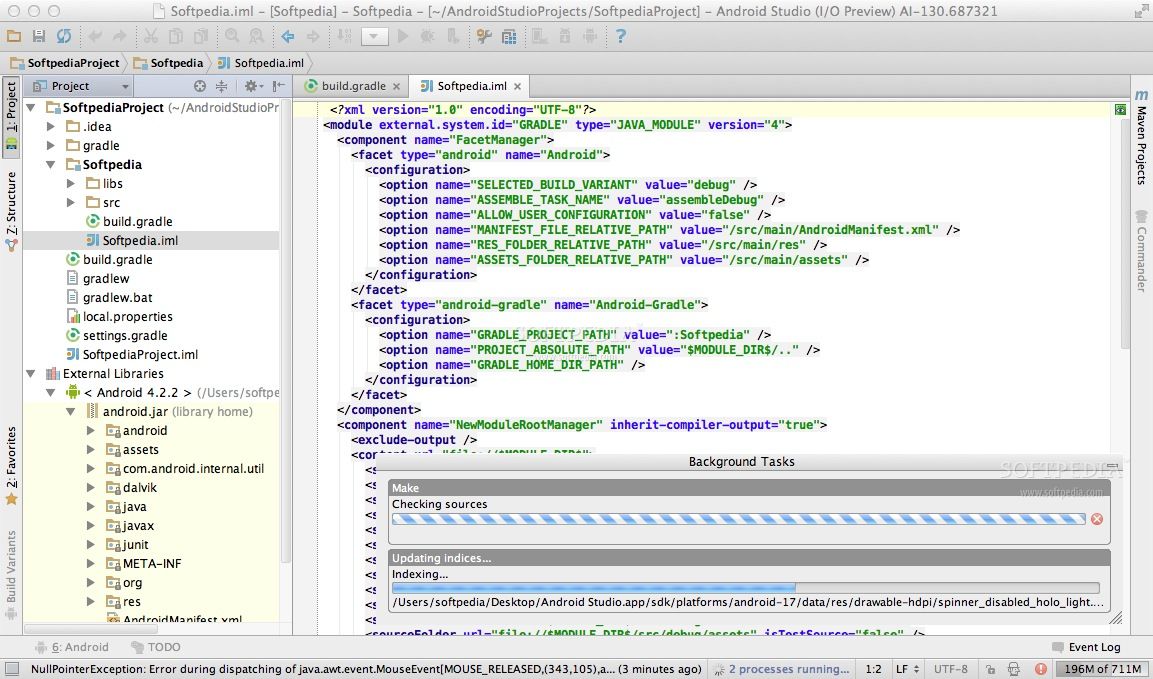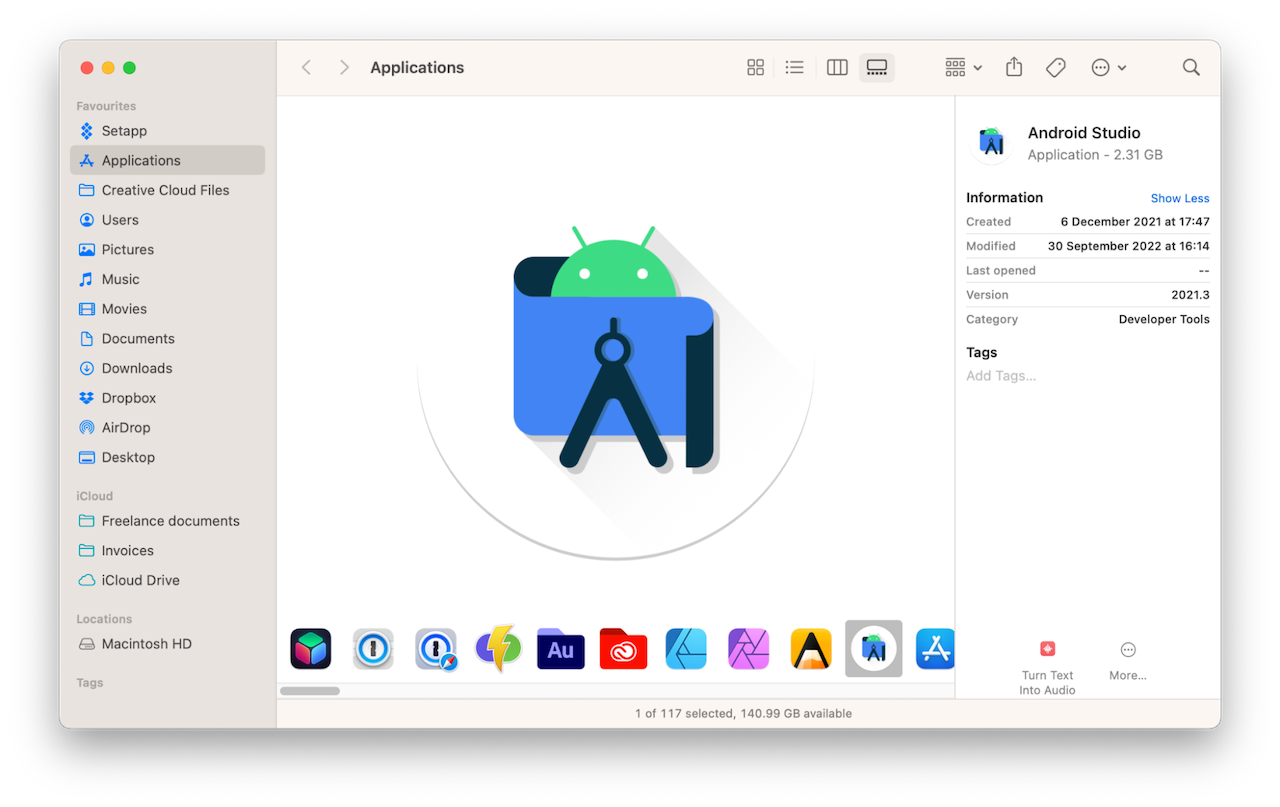
:max_bytes(150000):strip_icc()/Screenshot2019-10-15at15.47.27-2e634da21e2f4e639194b89d7cad01de.png)
- #ANDROID STUDIO FOR MAC HOW TO#
- #ANDROID STUDIO FOR MAC INSTALL#
- #ANDROID STUDIO FOR MAC ANDROID#
- #ANDROID STUDIO FOR MAC CODE#
- #ANDROID STUDIO FOR MAC SIMULATOR#
#ANDROID STUDIO FOR MAC CODE#
Step 8: Set up an editor – Visual Studio Code
#ANDROID STUDIO FOR MAC ANDROID#
In Android Virtual Device Manager, click Run in the toolbar.Select system images for the Android versions you want to emulate, and select Next.Choose a device definition and select Next.(The Android submenu is only present when inside an Android project.) Launch Android Studio > Tools > Android > AVD Manager and select Create Virtual Device.Enable VM acceleration on your machine.If adb is not recognising then you must set the ANDROID_HOME environment variable, like below export ANDROID_HOME=$HOME/Library/Android/sdkĮxport ANDROID_SDK_ROOT=$HOME/Library/Android/sdkĮxport PATH=$PATH:$ANDROID_SDK_ROOT/tools/binĮxport PATH=$PATH:$ANDROID_SDK_ROOT/platform-toolsĮxport PATH=$PATH:$ANDROID_SDK_ROOT/emulator In the terminal, run the flutter devices OR adb devices command to verify that Flutter or the IDE recognizes your connected Android device.

If prompted on your device, authorize your computer to access your device. Using a USB cable, plug your phone into your computer.Detailed instructions are available in the Android documentation. Enable Developer Options and USB debugging on your device.
#ANDROID STUDIO FOR MAC SIMULATOR#
$ open -a Simulator Step 7: Android Platform Setup iOS simulator: On your Mac, find the Simulator via Spotlight or by using the following command:.

#ANDROID STUDIO FOR MAC HOW TO#
Fresh installation of macOS Catalina will default to Z shell but an update from the previous version of Apple OS will persist your preference. Check here: HOW TO CHANGE YOUR DEFAULT SHELL Step 1: The Flutter SDK is free and open-source, so you can get the source code from the Flutter repo on GitHub $ git clone Step 2: Add the flutter tool to your path: export PATH="$PATH:`pwd`/flutter/bin" Step 3: Verify that the flutter command is available by running: $ which flutter Step 4: (Optional) Pre-download development binaries: $ flutter precache Step 5: Run the following command to see if there are any dependencies you need to install to complete the setup $ flutter doctor Here I’ll use macOS and Visual Studio Code for this tutorial.Īpple changed the default shell from bash to zsh. Setting up your development environment in macOSįlutter development can be done on macOS, Linux, or Windows, using any editor with the Flutter toolchain, there are IDE plugins for IntelliJ IDEA, Android Studio and Visual Studio Code that can ease the development cycle. Fuchsia is currently an experimental operating system in development at Google 2. In Flutter, widgets are not used just for the views of your app, but also for entire screens and even for the app itself.įuchsia’s user interface and apps are written with Flutter, a software development kit allowing cross-platform development abilities for Fuchsia, Android and iOS. JIT compilation improves the development workflow by allowing a hot reload capability to refresh the UI during development without the need for an entirely new build.įlutter framework is heavily built around the idea of widgets. Dart achieves this by using Ahead-Of-Time or AOT compilation.Īnother unique aspect of Dart is that it can also use Just-In-Time or JIT compilation. Unlike React Native, however, Flutter does not need to use a Javascript bridge, which can improve app startup times and overall performance. Dart shares many of the same features as other modern languages such as Kotlin and Swift and can be trans-compiled into JavaScript code.Īs a cross-platform framework, Flutter allows for a reactive and declarative style of programming.


 0 kommentar(er)
0 kommentar(er)
